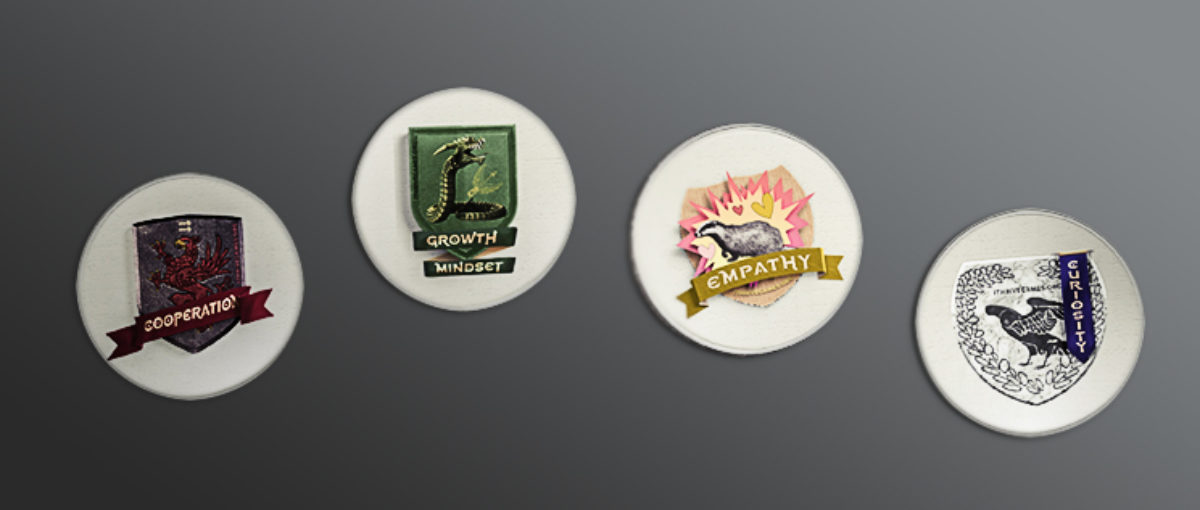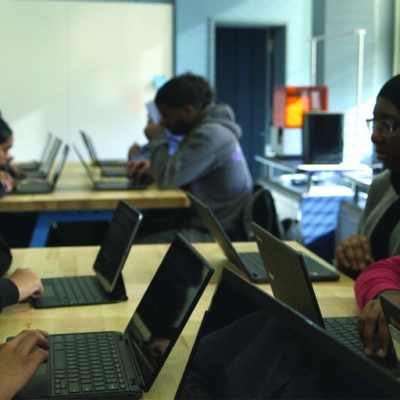
Put a Badge On It! Using Digital Badges to Support Social and Emotional Learning
Digital badges have been at the center of discussions around alternative credentialing systems for years. Digital badges—web-enabled tokens of accomplishment that circulate in social networks—rose to prominence as a potential alternative credentialing system in the early 2010s. The idea was that students could earn credit that would be recognized by universities, peer networks, employers, and others for skills built outside of formal schooling. Digital badges are unique in that they contain links to the evidence (projects, products, media) for which the badge was awarded.
Digital badges have the potential to motivate learners and promote important social and emotional learning (SEL) skills. Skeptics of badges "worry that students will focus on accumulating badges rather than making connections with the ideas and material associated with the badges-the same way that students too often focus on grades in a class rather than the material in the class, or the points in an educational game rather than the ideas in the game" (Resnick, 2012). But badge proponents find promise in having a new way to assess learners apart from the "current multiple-choice form of testing" that "doesn't measure all that is being learned and de-motivates true curiosity" (Davidson, 2012).

Digital badges can provide direct links to "evidence" of how and when they were earned. Image source
What if badges were not designed to replace grades? What if badges could be designed to promote SEL in ways traditional classroom grades couldn't? I describe some ways digital badges can (and have been) designed to promote SEL. Specifically, badges can and should be designed: (1) for collaboration; (2) to map learning pathways; and, (3) to leverage self- and peer-assessment practices.
[NOTE: These insights come from analyses of 29 projects in the Design Principles Documentation Project funded by the MacArthur Foundation. For more information go to: http://dpdproject.info/. Special thanks to Dan Hickey who was the lead on this project.]
Badges can be designed for collaboration
One core competency of SEL is relationship skills: "the ability to establish and maintain healthy and rewarding relationships with diverse individuals and groups" (CASEL). At the core of building relationship skills is an emphasis on creating environments and opportunities for collaboration where these relationships can be developed and maintained. Digital badges can be designed and implemented to promote these skills in collaborative environments. For example, digital badges can be awarded for group accomplishments, or for an individual's role in a group collaboration.

Examples of digital badges awarded for demonstrating social and emotional skills. Image source
Earning a badge for a group accomplishment could entail asking students to provide evidence of working together to reach a common goal. For example, creating a movie requires multiple individuals to fill the roles of director, cinematographer, screenwriter, and actor. An individual's role in a group collaboration could be rewarded by awarding badges to individuals, for example, for connecting with peers and teachers in the pursuit of further developing specific skills.
Many of the negative effects of competition around badges, as mentioned earlier, can be avoided by honoring group accomplishments. When competition is paired with collaboration, we would expect to see beneficial outcomes for learners in those environments allowing all learners to participate in competition (see Hickey, 2003).
Badges can be designed to map learning pathways by helping earners set goals.
Setting goals is an important self-regulated learning process (Zimmerman, 1990) and a core component of SEL related to self-management (CASEL). For teens to be successful at accomplishing large tasks, they must develop the ability to set and keep track of specific smaller goals that build up to the larger one. Digital badges can encourage teens to set goals through: user-created badges, using badges to display goal trajectory, and allowing for users to determine their own goal trajectory.
Badges could be awarded in a sequence for skills that build on themselves (for example by completing different missions related to an overall goal), thereby displaying a goal trajectory. By allowing students the ability to plan out and monitor their learning through user-created badges, the learner has to establish a set of standards on which to award the badge and can more thoughtfully plan and reflect on the experience. With user-determined goal trajectories, learners are able to reference a learning pathway and can decide what badges to pursue and see the steps to earning them. Users can track their progress by seeing what badges they have earned on the way to the larger goal.
Badges can be designed to leverage self- and peer-assessment practices.
Self-assessment is a practice that encourages learners to carefully cultivate accurate self-perceptions and recognize their strengths, which directly maps onto the self-awareness competency proposed by CASEL. A defining feature of a self-assessment badge is the ability for learners to have a role in defining the criteria for the badges they set out to earn.
Assessment has clear links with motivation and SEL. Certain characteristics of assessment, such as who does the assessing, may matter for the amount of effort a learner puts into a task. Learners who are asked to assess themselves on a task may reflect more deeply on their own learning. Learners who are assessed by their peers may put more effort into the task based on their need to appear competent in front of their peers. The incentive of allowing learners to be peer mentors and assess their peers may be motivating for learners because students feel in charge and are eager to help their tutees improve. As a byproduct, they often put forth more effort and learn more themselves (Chase, Chin, Oppezzo, & Schwartz, 2009).
Final thoughts
It is difficult to make assumptions about the outcomes of earning badges on SEL without understanding the context in which these badges are designed. Digital badges could be seen as more effective in promoting SEL skills if the teens earning the badges value them. While establishing the value of badges for this age group might be difficult at first, it is no doubt a prerequisite to seeing digital badges used successfully. The badge may also mean more for the earner if it circulates in social networks. For example, when an earner shares a badge with friends over Facebook or Twitter, friends can click on that badge, learn more about the accomplishment and the learning opportunity, add their own comments, and bring it to the attention of others. Incentives in themselves do not necessarily have positive or negative motivational influences. Rather, it is studying them in the contexts in which they operate that provide valuable insight about their impact.
__________
About the Author

Katerina Schenke, PhD is a Senior Researcher at CRESST|UCLA. Her research is on understanding how and under what circumstances students are motivated towards learning, how we can measure motivation and engagement through digital games, and how we can develop models of assessment that are informative to students and teachers. Katerina received her Ph.D. in 2015 from the University of California, Irvine, and B.A. from the University of California, Los Angeles in 2009 in psychology and German. She completed a postdoctoral position in psychometrics at UCLA in 2015-2016. In her spare time she is developing a game to help kids learn about causality and the digestive system, incorporating all of the lessons about motivation "goodness" from her work into her passion project.


